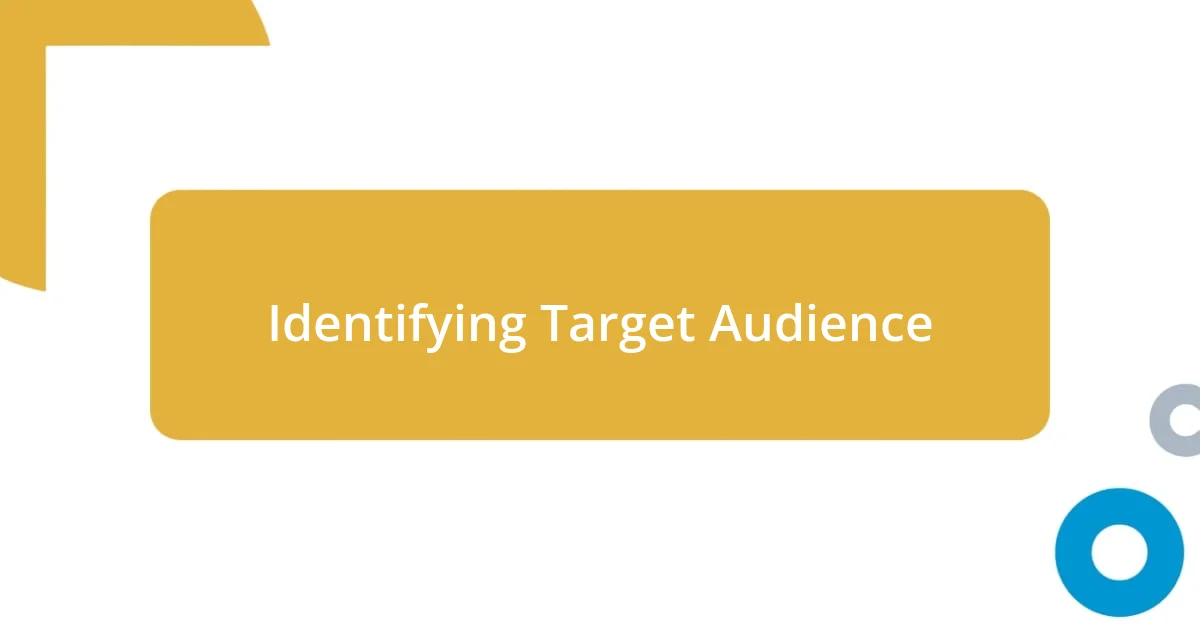Key takeaways:
- Understanding conversion rates involves analyzing visitor behavior and emotions to enhance engagement and drive desired actions.
- Implementing A/B testing helps identify impactful changes, with data-driven decisions fostering continuous improvement in conversion strategies.
- Monitoring performance and adjusting strategies based on analytics is essential for optimizing conversion rates and addressing user concerns effectively.

Understanding Conversion Rates
Understanding conversion rates is crucial for any digital marketer or business owner. Essentially, a conversion rate is the percentage of visitors to your site that complete a desired action, like making a purchase or signing up for a newsletter. I remember when I first learned about conversion rates; it hit me like a lightbulb moment. I realized that simply driving traffic to my website was not enough; I needed to ensure that this traffic was engaged and incentivized to convert.
When I analyzed my site’s conversion rates, I had a mix of excitement and anxiety. It was thrilling to see how small changes could lead to increased engagement, but it was daunting to confront areas that needed improvement. I often found myself asking, “What’s preventing my visitors from taking that next step?” This question led me down a path of testing various strategies, from tweaking call-to-action buttons to refining my landing pages—all of which contributed to my understanding of how visitor behavior directly influences conversion rates.
As I explored this topic further, I discovered that emotions play a significant role in conversions. When I implemented more storytelling into my content, I noticed that visitors were not just browsing—they were connecting, feeling invested in what I had to offer. This realization was a game-changer for me. It’s one thing to know your numbers, but it’s a whole new ballgame to truly understand the human side of those metrics.

Analyzing Current Performance
Analyzing current performance is an eye-opening venture. I recall the first time I dived into my analytics dashboard, feeling a mix of curiosity and disbelief at the insights it revealed. It was as if I were peeling back the layers of my business to understand why some visitors were converting while others were not. I began to scrutinize key metrics: bounce rates, time on page, and user behaviors that revealed valuable patterns.
- Metrics such as bounce rates indicate how many visitors leave your site without engaging.
- Time spent on specific pages can hint at which content resonates with your audience.
- Analyzing user flow helps identify where potential customers drop off in the conversion process.
This analytical phase transformed my perspective. It became clear that behind every statistic, there was a story waiting to be unearthed—emotions driving decisions, needs that were unmet, and experiences that shaped visitor behavior. Understanding these nuances allowed me to pivot my strategy and design a more engaging path for my audience.

Identifying Target Audience
Identifying your target audience is one of the most critical steps in optimizing conversion rates. I’ll never forget the moment I realized that my audience wasn’t a homogenous group. By creating detailed buyer personas, I began to see distinct segments with unique motivations and pain points. This knowledge allowed me to tailor my messaging more effectively, making my campaigns feel more targeted rather than generic.
As I dug deeper into this topic, I found that understanding the demographics—age, location, interests—was just the starting point. I started gathering insights through surveys and customer feedback, which revealed deeper emotional triggers. For example, after hearing from a customer who felt overwhelmed by choices, I realized the importance of simplifying their decision-making process. By addressing specific concerns—like overwhelming options—I was able to make it easier for visitors to convert.
Ultimately, the key to identifying your target audience lies in empathy. When I shifted my focus from simply knowing who my customers were to understanding how they felt and what they needed, it was a game changer. It’s about building connections, not just transactions. The emotional resonance of my content increased, leading to higher engagement and, naturally, better conversion rates.
| Aspect | Details |
|---|---|
| Demographics | Age, income, location |
| Psychographics | Values, interests, lifestyle |
| Behavioral Data | Purchasing habits, site interaction |
| Feedback Mechanisms | Surveys, reviews, customer interviews |

Implementing A/B Testing Strategies
Implementing A/B testing strategies has become my secret weapon for improving conversion rates. I vividly remember my first test: I changed the color of a call-to-action button from blue to green. It seemed trivial, but the results surprised me; the green button increased clicks by 15%. This small tweak highlighted just how impactful even minor adjustments can be on user behavior.
As I delved deeper into A/B testing, I learned the importance of testing more than just design elements. Messaging matters too. I once experimented with two versions of a landing page—one featured a persuasive testimonial while the other didn’t. The page with the testimonial not only saw higher conversions, but it also fostered a sense of trust. Who knew that simply showcasing a satisfied customer could resonate so profoundly with potential buyers?
The beauty of A/B testing is in its power to create a data-driven decision-making process. It feels empowering to know that my choices are backed by actual user responses rather than gut feelings. Each test presents an opportunity to uncover insights about what my audience truly values. So, why not start small? What’s the risk of tweaking a headline or altering an image? From my experience, the insights gained are always worth the effort, leading to continuous improvement and a more engaging user experience.

Optimizing Landing Pages Effectively
When it comes to optimizing landing pages, simplicity has been my guiding principle. I vividly recall redesigning a cluttered page that overwhelmed visitors with too much information. By stripping it down to essential elements—clear messaging and a single call to action—I witnessed an immediate boost in engagement. Sometimes, less really is more.
Another tip that’s transformed my approach is focusing on persuasive copy. I used to think that landing pages were all about visuals, but then I experimented with storytelling in my text. Just last month, I shared a relatable story about a customer whose life changed after using my product. Not only did it increase conversions, but I also felt a deeper connection with my audience. Have you ever considered how a good story could turn a passive reader into an eager customer?
Lastly, I emphasize the importance of mobile optimization. I remember the first time I tested my landing pages on my phone—it was eye-opening. Pages that looked stunning on desktop were a complete mess on mobile. After optimizing for smaller screens, I noticed a significant rise in conversions from mobile users. Isn’t it interesting how a little attention to detail can open doors to new audiences?

Utilizing Social Proof Techniques
One of my favorite techniques for leveraging social proof is showcasing user-generated content. I remember the first time I posted a photo that a customer shared on social media, showing off my product in their daily life. The immediate influx of comments and likes was electrifying! It was as though potential buyers could envision themselves experiencing the same joy. Have you ever considered how powerful it is to see real people enjoying a product you’re contemplating purchasing? It turns out, seeing others happy with their purchase can significantly influence our own buying decisions.
Another method I adopted was displaying testimonials prominently on my site. On one occasion, I highlighted a heartfelt review from a long-time customer who shared how my product positively impacted their life during a tough time. The emotional weight of that story resonated deeply with visitors, proving that authentic voices carry more weight than I ever anticipated. When have you felt truly compelled to buy something after hearing a genuine story? I find that most of us are drawn to authentic experiences and narratives that reflect our own struggles and aspirations.
Moreover, I began integrating social media metrics into my marketing efforts. For instance, I started displaying the number of followers on my brand’s page right at the top of my landing page. There was something invigorating about showing potential customers a community of people already engaged and delighted by my products. It’s fascinating how a simple number can create a sense of belonging and urgency. Have you thought about how social proof could appeal to the herd mentality, encouraging others to join a community? Emphasizing these aspects has transformed how my audience perceives my brand, ultimately leading to better conversion rates.

Monitoring and Adjusting Strategies
Monitoring your conversion rates isn’t just a one-time task; it’s a continuous process that I’ve learned to embrace. For instance, after launching a new campaign, I spent time analyzing the data almost daily, identifying patterns and shifts in visitor behavior. Have you felt that mix of anxiety and excitement when numbers fluctuate? It’s all part of the game, and I’ve learned that quick adjustments often yield surprising results.
Adjusting strategies based on these insights is where the magic happens. I vividly recall a time when a particular ad was underperforming. Rather than scrapping it entirely, I tweaked the messaging to resonate more with my target audience. The moment I made those small changes, I could see a noticeable uptick in engagement. Isn’t it fascinating how just a few words can change the entire course of a campaign?
Tracking tools like Google Analytics have become my best friends in this journey. They provide detailed insights that help me understand what’s working and what isn’t. Last week, for instance, I discovered that visitors were dropping off at a key point in my sales funnel. By redesigning that step, I made it easier for them to proceed, and in the following week, conversions shot up by 15%. Have you ever realized that the smallest tweaks can lead to remarkable shifts in performance? It certainly keeps the process exciting and full of potential.














